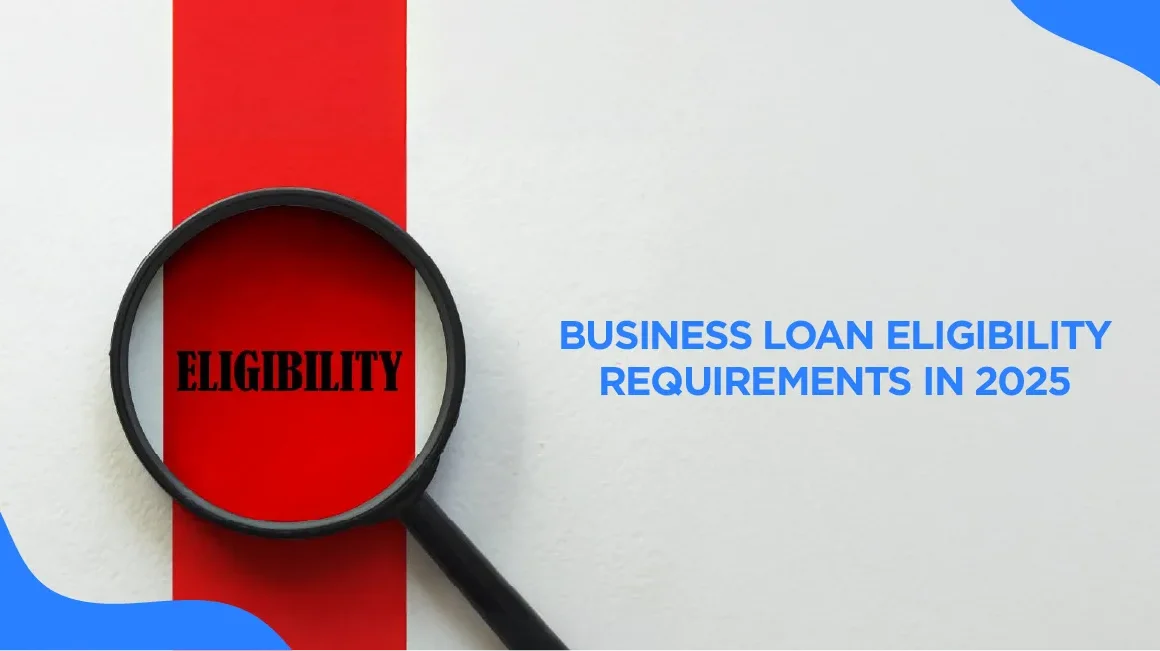Introduction
In today’s fast-paced business world, having access to quick funding can make the difference between seizing a lucrative opportunity or missing out entirely. Whether you need to cover unexpected expenses, invest in inventory, hire staff, or expand operations, fast business funding offers a lifeline to keep your company moving forward without delay.
As we enter 2025, business owners have more financing options than ever before, thanks to advancements in technology, innovative lending platforms, and evolving financial products. However, navigating these choices to secure the fastest and most suitable funding requires knowledge, preparation, and strategic decision-making.
This article explores how you can get fast business funding in 2025, covering the types of funding available, eligibility criteria, application tips, and how to avoid pitfalls. Additionally, we answer common questions, summarize key insights, and provide actionable takeaways to help your business secure the capital it needs—when it needs it.
Key Takeaways
- Clearly define your funding needs and timeline before applying.
- Review your credit and financial health to improve approval chances.
- Gather necessary documents ahead of time to speed up applications.
- Compare multiple lenders to find the best rates and terms.
- Understand loan costs, fees, and repayment requirements.
- Use funds responsibly to support business growth.
- Maintain transparent communication with lenders for smoother processing.
Why Fast Business Funding Matters

Fast business funding is crucial for maintaining cash flow, managing emergencies, and capitalizing on growth opportunities. Slow access to capital can hinder your ability to pay suppliers, meet payroll, or invest in marketing campaigns. In contrast, quick access to funds allows you to:
- Address urgent financial needs without disrupting operations
- Respond swiftly to market changes or competitor moves
- Take advantage of time-sensitive deals or bulk discounts
- Maintain supplier and employee trust by meeting commitments promptly
- Enhance your business’s reputation by demonstrating financial agility
In 2025, businesses expect speed and convenience from lenders, reflecting the rapid pace of commerce and digital transformation.
Types of Fast Business Funding Available in 2025
1. Online Business Loans
Online lenders have revolutionized the lending landscape by offering streamlined applications and faster approval processes than traditional banks. Many online lenders provide funding within 24 to 72 hours.
- Pros: Fast approval, minimal paperwork, flexible use of funds
- Cons: Often higher interest rates than banks, shorter repayment terms
2. Business Lines of Credit
A business line of credit gives you access to a pool of funds that you can draw from as needed, only paying interest on the amount used.
- Pros: Flexibility, pay interest only on withdrawn funds, reusable credit
- Cons: May require good credit, possible annual fees
3. Merchant Cash Advances (MCA)
MCAs provide lump-sum funding in exchange for a percentage of future credit card sales or daily bank deposits.
- Pros: Fast funding, suitable for businesses with high card sales
- Cons: Expensive with high fees, repayment tied to sales volume
4. Invoice Financing
If your business issues invoices with long payment terms, invoice financing allows you to receive cash advances based on outstanding invoices.
- Pros: Quick cash flow, doesn’t require collateral beyond invoices
- Cons: Fees and interest can add up, limited to invoice amounts
5. Short-Term Loans
Short-term loans are typically repaid within a year and can be funded quickly for immediate needs.
- Pros: Quick access, smaller loan amounts suitable for short-term needs
- Cons: Higher interest rates, frequent payments may strain cash flow
6. SBA Express Loans
The Small Business Administration (SBA) offers an Express loan program with quicker turnaround times than standard SBA loans, typically within 36 hours.
- Pros: Lower rates than many private lenders, government-backed
- Cons: More documentation than private lenders, loan amounts capped
How to Qualify for Fast Business Funding
Lenders look for several key factors when approving fast business funding:
- Credit Score: A strong business and personal credit score improves approval chances. Many fast lenders require at least a fair score (600+), though some have options for lower scores.
- Business Revenue: Demonstrated steady revenue assures lenders you can repay. Many lenders require a minimum monthly revenue (e.g., $10,000+).
- Time in Business: Typically, lenders want to see that your business has been operational for at least 6 months to a year.
- Debt-to-Income Ratio: Lenders assess how much debt you already have versus income to ensure you can handle additional debt.
- Documentation: While fast lenders require less paperwork than traditional banks, you’ll still need basic documents such as bank statements, tax returns, and identification.
Step-by-Step Guide: How to Get Fast Business Funding in 2025
Step 1: Evaluate Your Funding Needs
Clearly define why you need funding, how much you require, and how quickly you need it. This will help you target the right loan product.
Step 2: Check Your Credit and Financial Health
Review your credit scores and financial statements. If your scores are low, consider working to improve them before applying, or target lenders specializing in credit-challenged borrowers.
Step 3: Prepare Your Documents
Gather key documents in advance, including bank statements, tax returns, business licenses, and financial statements.
Step 4: Research Lenders and Compare Options
Look at multiple lenders’ rates, terms, fees, and funding speed. Use online marketplaces or loan comparison sites for efficiency.
Step 5: Submit Applications to Multiple Lenders
Apply to several lenders simultaneously to increase your chances of quick approval, but be mindful of multiple credit inquiries.
Step 6: Review Offers Carefully
Compare interest rates, fees, repayment terms, and loan amounts before choosing the best offer.
Step 7: Accept the Loan and Use Funds Wisely
Once approved, use the funds only for your stated business purposes and keep records to ensure accountability.
Tips to Speed Up Your Funding Approval
Securing fast business funding isn’t just about finding lenders who promise quick disbursements—it’s also about how efficiently you prepare and navigate the application process. The better you prepare and communicate, the faster your application moves through underwriting and approval. Here are proven tips to help speed up your funding approval in 2025:
1. Prepare and Organize All Required Documentation Ahead of Time
One of the biggest causes of delays in loan approvals is missing or incomplete documentation. Common documents lenders ask for include:
- Recent bank statements (typically 3-6 months)
- Business and personal tax returns
- Profit and loss statements or financial statements
- Business licenses and registrations
- Identification documents (e.g., driver’s license, passport)
- Proof of business ownership and structure
Gather these documents before starting your application to avoid last-minute scrambling. Having digital copies ready also facilitates quick submission through online platforms.
2. Maintain Strong and Accurate Financial Records
Up-to-date and accurate financial records make your business look more credible and stable. Consistent bookkeeping, clean bank statements, and well-prepared profit/loss statements reassure lenders that your business is well-managed and capable of repaying debt.
Using accounting software can help keep your financial data organized and easily accessible when lenders request it.
3. Check and Improve Your Credit Scores
Both your personal and business credit scores play a crucial role in loan approvals. Regularly checking your credit reports allows you to identify and correct any errors or discrepancies. If your credit scores are low, take steps to improve them before applying:
- Pay down existing debt
- Make all payments on time
- Avoid opening multiple new credit accounts before applying
- Keep credit utilization low
Higher credit scores can not only speed up approvals but may also qualify you for better interest rates and terms.
4. Be Transparent and Responsive
Lenders often need additional information during underwriting. Promptly responding to their requests for clarification or extra documentation can significantly reduce processing time. Avoid delays by monitoring your email and phone messages closely after submitting your application.
Additionally, be upfront about any issues your business may face. Transparency builds trust and helps lenders work with you to find solutions rather than holding up the process.
5. Use Online Lenders and Automated Platforms
In 2025, many lenders have invested in technology that speeds up the approval process through automated underwriting. Online lenders use algorithms to quickly evaluate your creditworthiness based on submitted data, sometimes providing instant pre-approvals.
Applying through such platforms reduces human bottlenecks, accelerates decision-making, and often allows you to electronically sign documents to expedite funding.
6. Limit the Number of Simultaneous Applications
While it’s good to shop around, submitting too many loan applications at once can hurt your credit score due to multiple hard inquiries. This might also raise red flags with lenders who see you as a higher risk.
Aim to apply selectively to lenders whose criteria match your profile and funding needs to balance maximizing approval chances without damaging your credit.
7. Work with a Business Financial Advisor or Broker
A professional financial advisor or loan broker who understands the lending landscape can guide you through the application process, recommend lenders best suited to your needs, and ensure your application is complete and compelling.
They can also anticipate lender questions, helping you prepare answers or documents in advance, thereby reducing back-and-forth delays.
8. Showcase Strong Business Fundamentals
Lenders prefer businesses that demonstrate stable revenue, a solid business plan, and good cash flow management. Presenting recent financial projections, growth strategies, and evidence of consistent revenue streams can make lenders more confident and expedite approval.
If possible, highlight any contracts, recurring customers, or partnerships that contribute to your business’s stability.
9. Have a Clear Purpose for Your Loan
Clearly articulating how you plan to use the funds and how the loan will benefit your business reassures lenders. A detailed loan purpose statement or business plan attachment helps them understand your financial needs and repayment ability, speeding up their decision process.
10. Maintain Positive Banking Relationships
If you have a good relationship with your bank or credit union, leverage it. Existing customers with a history of responsible banking can often experience faster processing times and more personalized service.
Common Pitfalls to Avoid

- Applying without a clear funding plan
- Submitting incomplete or inaccurate information
- Ignoring fees and loan terms
- Overborrowing or taking on unaffordable repayments
- Not comparing multiple loan offers
- Failing to check lender reputation and reviews
Also Read :-What Is The Best Way To Apply For A Business Loan?
Conclusion
Fast business funding in 2025 is more accessible than ever, thanks to technology and a diverse lending ecosystem. By understanding your needs, preparing your financials, researching lenders, and applying strategically, you can secure quick funding that keeps your business agile and competitive.
Whether you choose an online loan, a line of credit, or invoice financing, the key is to match the product to your unique business requirements and manage funds responsibly. Fast funding can be a powerful tool—but only if approached with care and preparation.
FAQs
1. How fast can I get business funding?
Many online lenders provide funds within 24 to 72 hours, while traditional banks can take weeks.
2. What credit score do I need for fast business loans?
Generally, a score of 600+ is preferred, but some lenders cater to lower scores.
3. Are merchant cash advances a good option?
They provide fast cash but tend to be expensive and should be used cautiously.
4. Can startups get fast business funding?
Yes, though options may be limited. Alternative lenders and microloans are often better suited for startups.
5. What documents do I need to apply?
Typically bank statements, tax returns, identification, and financial statements.
6. How do I improve my chances of approval?
Maintain good credit, prepare documents in advance, and apply to multiple lenders.
7. Can I use fast funding for any business purpose?
Most lenders allow flexibility, but some loans may restrict use (e.g., equipment loans).



